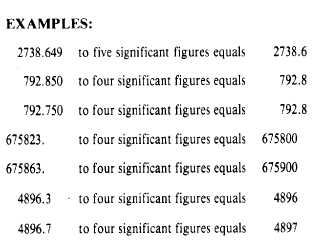CHECKING COMPUTATIONS.— Most
mathematical problems can be solved by more
than one method. To check a set of computations,
you should use a method that differs from the
original method, if possible. An inverse solution,
starting with the computed value and solving for
the field data, is one possibility. The planimeter
and the protractor are also used for approximate
checking. A graphical solution can be used, when
feasible, especially if it takes less time than a
mathematical or logarithmic solution. Each step
that cannot be checked by any other method must
be recomputed; and, if possible, another EA
should recompute the problem. When an error or
mistake is found, the computation should be
rechecked before the correction is accepted.
Drafting Used In Surveying
The general concept of drafting and the use
of drafting instruments were discussed in chapters
2 through 5. By this time, you should be familiar
with the use of various drafting instruments and
with the elements of mechanical drawing. Draft-
ing used in surveying, except for some freehand
sketches, is generally performed by mechanical
means; for example, the drawing of lines and
surveying symbols is generally done with the aid
of a straightedge, spline, template, and so on.
The drawings you make that are directly
related to surveying will consist of maps, profiles,
cross sections, mass diagrams, and, to some
extent,
other graphical calculations. Their
usefulness depends upon how accurately you plot
the points and lines representing the field
measurements. It is important that you adhere to
the requirements of standard drawing practices.
Correctness, neatness, legibility,
proportioned drawing arrangement
professionalism.
and well-
are signs of
In drawing a PROPERTY map, for example,
the following general information must be
included:
1. The length of each line, either indicated
on the line itself or in a tabulated form, with the
distances keyed to the line designation.
2. The bearing of each line or the angles
between lines.
3. The location of the mapped area as
referenced to an established coordinate system.
4. The location and kind of each established
monument indicating distances from reference
marks.
5. The name of each road, stream,
landmark, and so on.
6. The names of all property owners,
including those whose lots are adjacent to the
mapped area.
7. The direction of the true or magnetic
meridian, or both.
8. A graphical scale showing the
corresponding numerical equivalent.
9. A legend to the symbols shown on the
map, if those shown are not standard signs.
10. A title block that distinctly identifies the
tract mapped or the owner’s name. (It is required
to contain the name of the surveyor, the name
of the draftsman, and the date of the survey.)
Besides the above information, there are some
other items that may be required if the map is to
become a public record. When this is the case,
consult the local office of the Bureau of Land
Management or the local surveyors’ society for
the correct general information requirements to
be included in the map to be drawn.
In drawing maps that will be used as a basis
for studies, such as those to be used in roads,
structures,
or waterfront construction, you
are required to include the following general
information:
1. Information that will graphically represent
the features in the plan, such as streams, lakes,
boundaries, roads, fences, and condition and
culture of the land.
2. The relief or contour of the land.
3. The graphical scale.
4. The direction of the meridian.
5. The legend to symbols used, if they are not
conventional signs.
6. A standard title block with a neat and
appropriate title that states the kind or purpose
of the map. Again, the surveyor’s name and that
11-9


